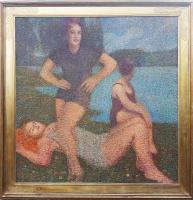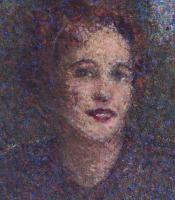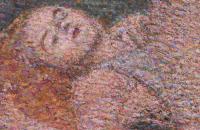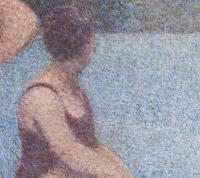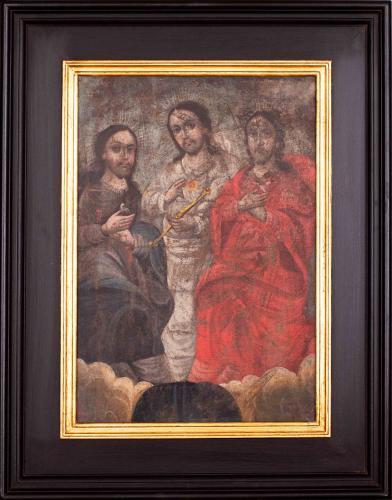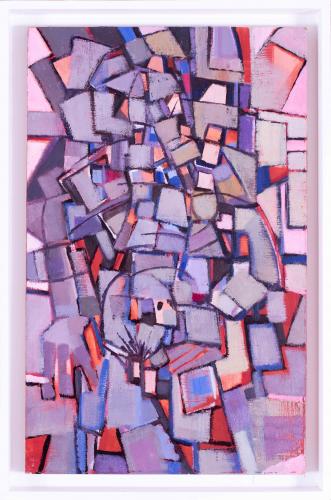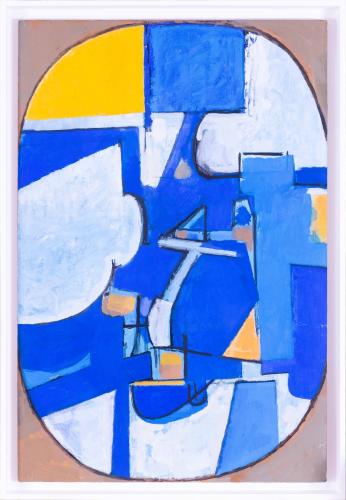
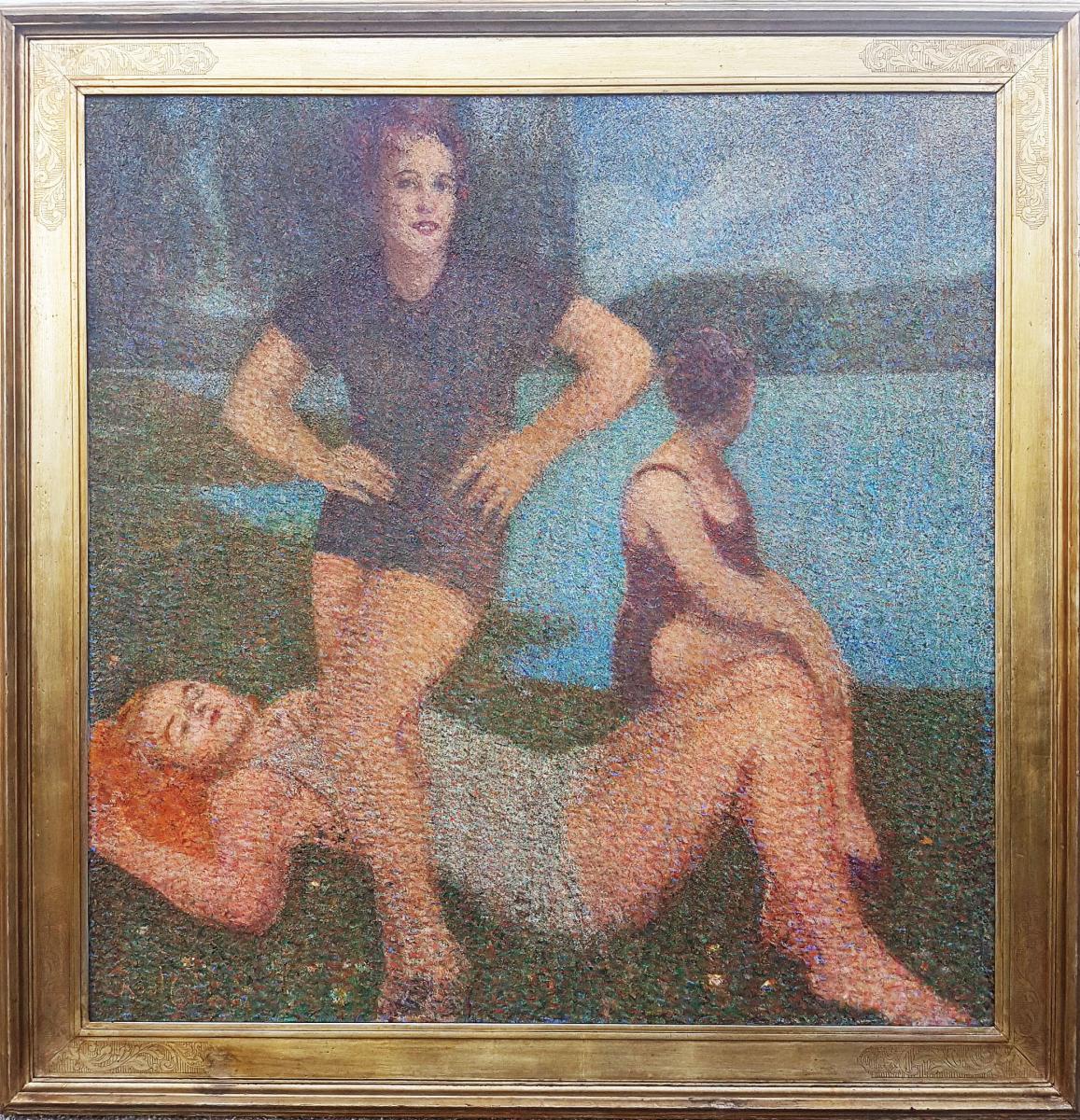
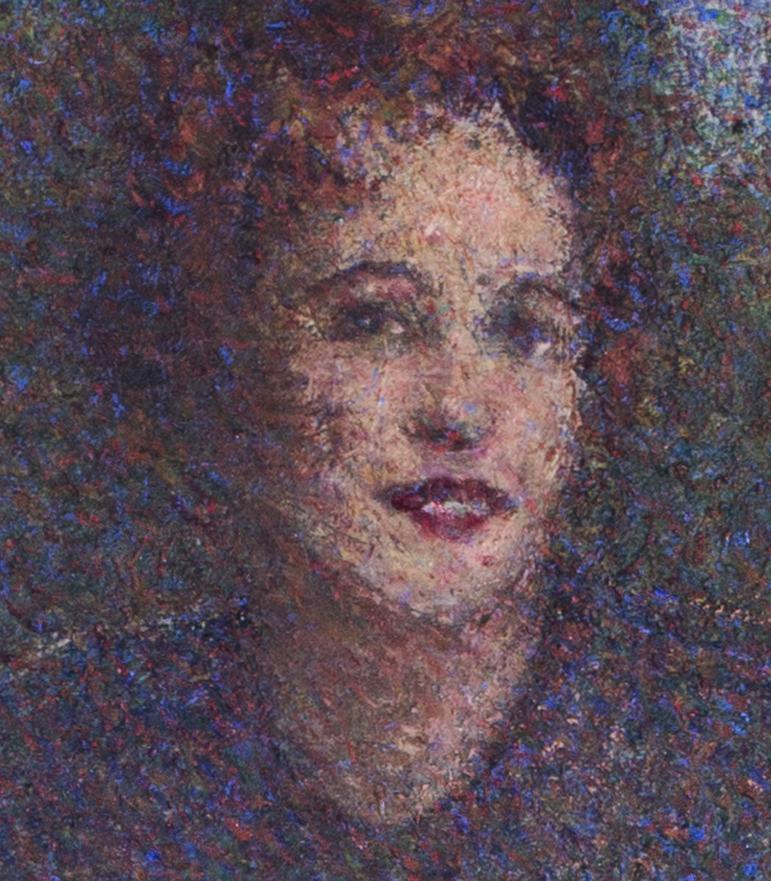
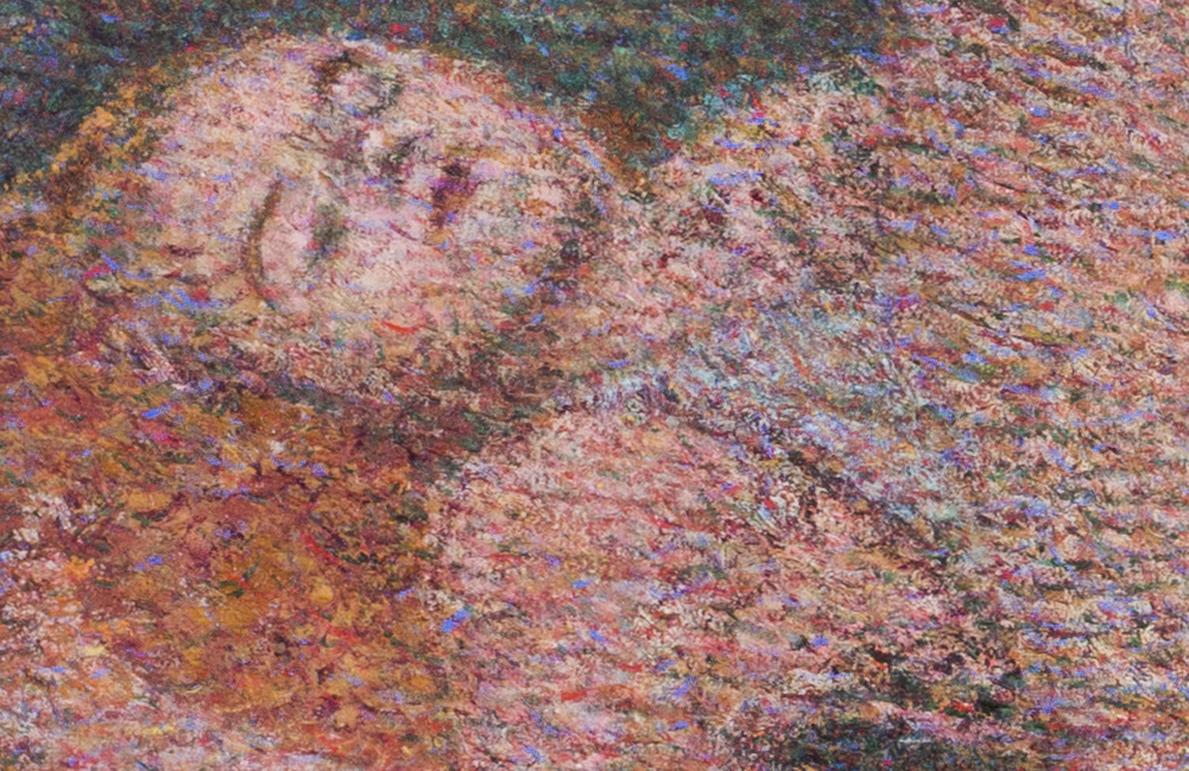
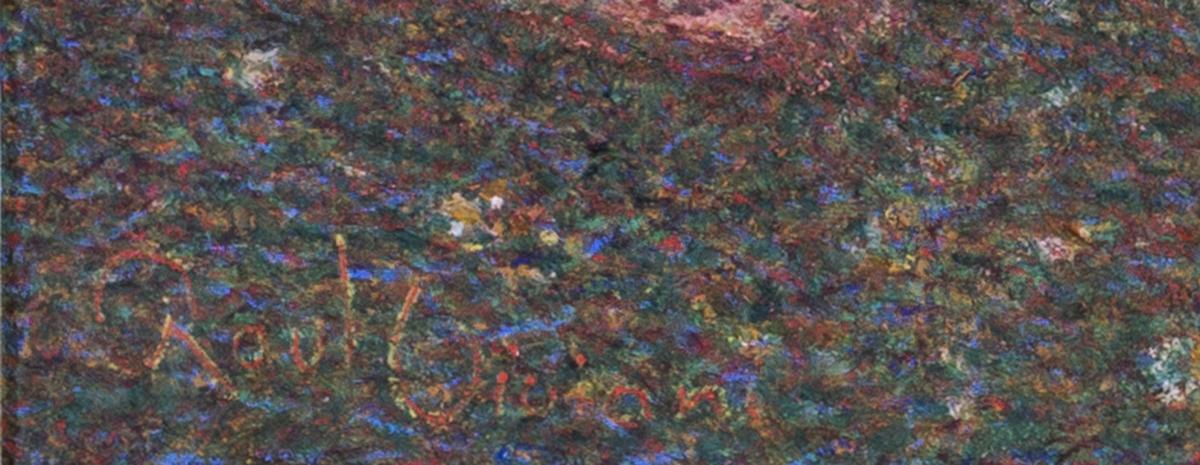
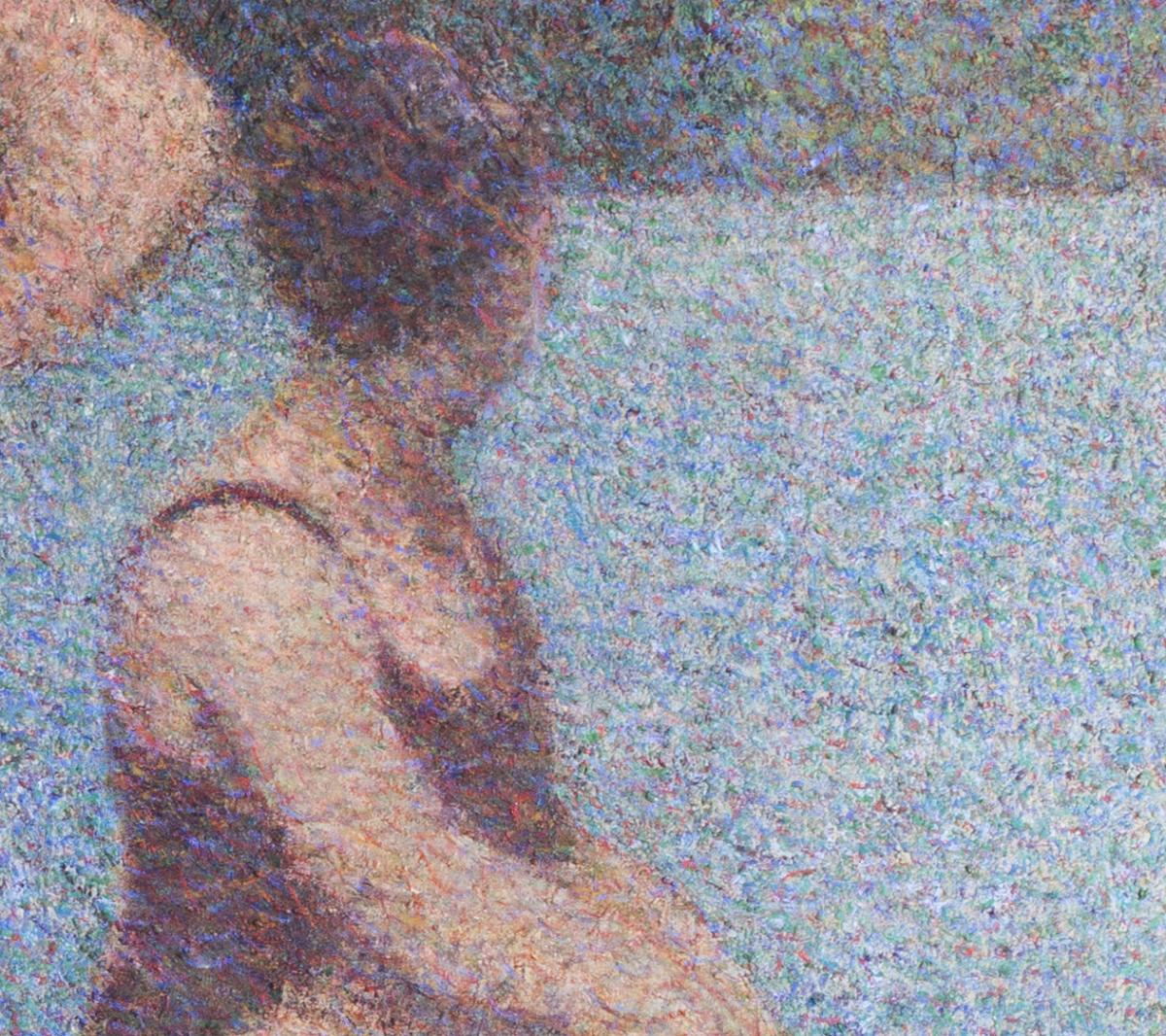
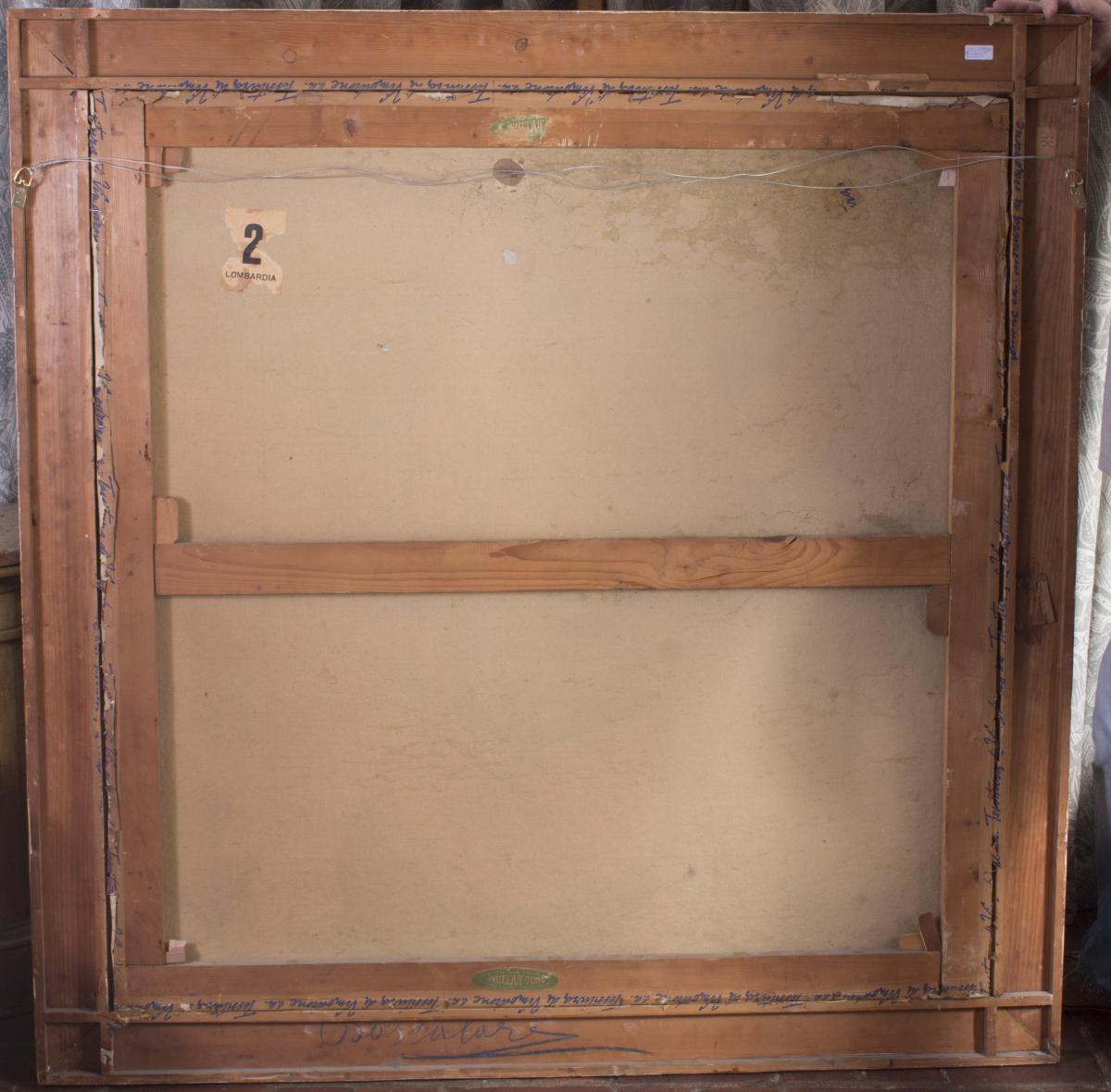
This object is eligible for a Certificate of BADA Provenance
The BADA Standard
- Since 1918, BADA has been the leading association for the antiques and fine art trade
- Members are elected for their knowledge, integrity and quality of stock
- Our clients are protected by BADA’s code of conduct
- Our dealers’ membership is reviewed and renewed annually
- Bada.org is a non-profit site: clients deal directly with members and they pay no hidden fees
Raul Viviani (Italian, 1883 - 1965)
The Three Graces
Oil on canvas
Signed `Viviani’ (lower left)
49.1/4 x 49.1/4 in. (125 x 125 cm.)
Raul Viviani relocated from Florence to Milan as a teenager and in 1898, joined the Accademia di Brera. Mentored by Giuseppe Mentessi he frequented the school of Famiglia Artistica studying the nude. In 1900, still only 17 years old, he began producing works for the exhibition Famiglia Artistica where he was lauded by many critics for his strong, modern landscapes.
In 1902 he became secretary for the Famiglia Artistica and took great interest in the Divisionists movement. He made strong friendships with Emilio Longoni and Gaetano Previati among others. In 1912 he participated in the Venice Biennale, where he caught the attention of Camillo Boito who lavished praise for Viviani’s artistic independence and technical experimentation.
It was Boito, in fact who nominated Viviani for the Accademia d’onore di Brera. His success grew continually and Viviani participated in an increasing number of shows at home and abroad. He showed in Rome, Turin, Naples, Monaco, Paris, Brusells, Buenos Aires and Sao Paolo.
In 1926 he embarked on his career as a critic writing for ‘Roma’ and ‘Mezzogiorno’ and then became the director for the ‘Giornale dell’Arte’ in 1929. His opposition to fascism inspired him to write a series of attacks on the movement and eventually forced him to take voluntary exile.
In 1931 the president of Uruguay asked him to found the ‘l’Accademia di Belle Arti di Montevideo. In 1937 he returned to Milan continuing his artistic career but above all his role as a critic. This work was executed in the late 1920s and shows elements of the Divisionist style he so respected.
The BADA Standard
- Since 1918, BADA has been the leading association for the antiques and fine art trade
- Members are elected for their knowledge, integrity and quality of stock
- Our clients are protected by BADA’s code of conduct
- Our dealers’ membership is reviewed and renewed annually
- Bada.org is a non-profit site: clients deal directly with members and they pay no hidden fees


